It's taken a time to write this post due to exhaustion on the trip back home, and getting together all the pictures that were taken, and selecting a few of the best ones to show in this blog.
It was a long drive, but it was definitely worth it. Visiting Auschwitz has affected me deeply.
I have always been very aware of the Holocaust, but standing face to face with Auschwitz was in a way still an eye opener.
I read about the Holocaust, I read survivor's stories, I've seen movies and documentaries concerning Auschwitz, but standing in the place where thousands and yes, even millions suffered was something different entirely.
When we first arrived we could already see the guard towers on the perimeter of Auschwitz I, the main work camp, looming over the area inside.
Auschwitz II, or better known as Birkenau, was a few kilometres away.
We walked into the Museum entrance and signed in. We were with a group of four people: my mother, my father, the daughter of my parent's friends, and myself.
The museum is free of costs so that all may visit. Tour guides are available for groups which you can either book in advance, or you might try your luck joining a tour group on site.
It is also possible to roam the camp by yourself, which is what we did. We arrived fairly late in the morning, at around 11 o'clock, despite leaving very early in the morning.
Upon exiting the Museum building we encountered something of a courtyard.
There was a road going straight ahead along some buildings on our left, and after perhaps 25 metres a road bended off to the right, into the living quarters of the Auschwitz prisoners.
Over this road stood the well-known sign telling prisoners that 'work sets you free', Arbeit macht frei.
This was, ofcourse, a lie told by the Nazi's to keep the prisoners in a state of hope.
However, they were never meant to go free. The Nazi's were keeping them in Auschwitz as a work detail untill they either got sent away to the gas chambers, or died of starvation.
Workers never received enough food for even a regular day, let alone a day in which they had to work 11 or more backbreaking hours. Many prisoners died during the march towards work or during work itself.
They simply collapsed, or got beaten or shot as they became less and less efficient. Should they survive, they might very well be the next group of people to be sent off to a gas chamber.
As you pass under the arch and walk into the camp you'll soon come across signs with information on them.
They tell you stories about life in the camp, or describe in detail what a building was used for.
Many of these buildings were housing for prisoners, and in many of these buildings you'll come across exhibits.
Each building has a particular exhibit. One tells you about the initial attack on Poland, and the places the Polish army has fought afterwards during World War 2.
Another building will tell you about acts of racism first displayed when the Nazi's came into power, and another will tell you about life inside the camp. There are many exhibits and all of them are very interesting and disturbing to watch.
Walking through the camp was like walking through a graveyard.
Barracks rose up to either side, looming sinisterly over our heads. Walls were all around us.
This is a place filled with history. Taking a right at the nearest road led us to a place that was used to hang prisoners. To the left was a building where they would prop up the dead bodies of prisoners who had fled but who were caught. A warning to all those who thought of trying.
Here are some photographs from the exterior of Auschwitz I (Note that some photo's might seem a bit distorted. Some of them were taken with my GoPro camera, which is notorious for it's fishbowl effect):
A double fence running around the living area.
Looking towards the Museum area, which probably was a guardhouse.
Looking off to the right from the same position as the picture above.
The centre of the living area.
Most of these buildings are enterable and contain an exhibit, of which I'll show you another few photographs:
Among many of these photographs are quotes by Nazi leaders.
This picture shows a German soldier preparing to shoot a woman and her child.
This wall contained multiple photographs of groups of prisoners.
The picture on the right was taken in the Birkenau barracks.
Children were as good a target as any man or woman. No one was spared.
Are these the faces of children who deserved to die? Why?
These children were victims of Dr. Mengele, 'famous' for his experiments on prisoners.
This man also earned the nickname 'Angel of Death', as he would often be deciding on a persons fate upon his or her arrival. He would just stand there, pointing with his finger. Left to live, to the right to die.
Starvation was a powerful ally to the Nazi's. It kept the prisoners too weak to resist.
The woman in this picture weighed around 75 kilogram upon arrival.
When this photograph was taken she weighed a mere 25 kilogram's.
More photograps of starving women.
On this picture you can see a baby. This baby was once part of a triplet, before Mengele got his hands on them. To the right you can see a fourteen year old girl, completely emaciated.
What did these people ever do to receive such treatment? Children, babies, the elderly, all were held accountable to the crime of being a Jew.
As I said in my very first post, to me Auschwitz was the symbol of what blind hate can do. Look at these pictures. Look at the people in them. How could anybody just hate anybody else over something as shallow as race, the colour of your skin? The faith you have? Your appearance? How?
But history has proven that one man can find a way to incite other people to madness.
Just think of this: there were thousands of people needed to kill all of the Jews. How is it possible that there are so many? How can a man look upon the death of a child, and approve of it?
Now take a look at this. These are pictures of a gas chamber located in Auschwitz I, and as far as I know the only one to remain of the five crematoriums the Nazi's had at Auschwitz.
This picture was taken upon entering the building. This door would normally be closed, as you can look inside and see an oven used for cremation of dead bodies. The prisoners would be herded off to the right.
This is the actual gas chamber. The chamber was cold and damp, and bone chilling. Upon entering all I could mutter was 'Oh my God...'
This is a place where thousands of people lost their life. As the shivers ran down my spine I could almost hear this place's history screaming at me: "Why? What have we done to deserve this?"
A memorial stands in the centre of the chamber.
Directly to the left was a door that led to the cremation ovens, situated not 10 metres away.
Like worthless junk people were shoved inside these ovens to be cremated, leaving no trace of their existance.
Notice how the ceiling of this place is completely blackened by the years of burning dead bodies inside.
It is clear that the Jews and other unwanted people (Auschwitz was also a prison for political prisoners, Russian prisoners of war, resistance fighters, Roma gypsies, homosexuals and various other groups) were thought of as less than human.
The groups that were led in to be gassed were shaved before going inside the gas chamber, their hair to be sold as a raw material for manufacturers, as if they were sheep. In Birkenau, people lived in shacks that would be considered inhumane even to pigs.
This madness wasn't limited to a small group of people either, as thousands of people were needed to be able to systematically murder over six million people.
Note that word, systematically.
This systematic mass murder indicates one thing: at some point in time, a group of people sat down together, in order to calmly discuss how best to kill as many 'Unterwünschten" as possible.
They came up with a plan to do so. These were not crimes of passion, these were crimes of a cold and calculative nature.
These people, somehow, were absolutely convinced that they were in the right. How many of these people had actually met a Jew? How were they able to grow such a hate for people they didn't even know? A hate so strong that they would kill even babies?
There were several other buildings in Auschwitz that I think were absolutely terrifying to see as well.
One of them contained a glass showcase imbedded into the wall, holding dozens of cans of Zyklon B, the gas that was used inside the gas chambers.
Another room contained another glass showcase that fitted half the room.
You aren't allowed to take pictures there and so I didn't, and you'll have to believe me when I tell you this.
This showcase was at least 25 metres long and 5 metres deep, and it was filled to nearly my own height with human hair. Victim's hair. This showcase contained 1950 kilograms of human hair.
When I entered the room and noticed the case, I was speechless. There was so much!
And suddenly I found myself to be extremely close to the remains of victims. These weren't 'just' photographs anymore. It was as if the victims materialised before my eyes.
They have been gone for over 70 years, yet here I stood face to face with something that was a part of them, so near to me that if it wasn't for the glass I could have touched them, as if my hand went back in time. I felt as if I was walking in a mausoleum, face to face with a part of the nameless dead.
Who's hair was contained in this case?
Engrossed by all of this information we slightly lost track of time. We simply didn't want to rush through anything. This was far too important.
However, there was still Birkenau to see, and time was running out. We ended up being unable to see one or two of the last exhibit buildings as we hurried to catch the museum bus to Birkenau.
Where Auschwitz I was intended as the primary work camp, Birkenau was intended to be the main death camp. It was the place where the other crematoriums were located.
Unfortunately almost all of them were destroyed in an attempt to cover up evidence. Most of the crematoria were dismantled fairly early as the Nazi's realised they were starting to lose the war.
However one of the crematoria remained to be in use up to a few days prior to liberation of the camp.
Because Birkenau was the death camp, living conditions were increasingly harsh.
Roads made way for muddy paths, brick buildings made way for wooden barracks with sleeping cots that could fit several people, stacked upon eachother.
Many of the prisoners first arriving to Birkenau were immediately sent off to die in the gas chambers, while a small percentage was allowed to live for a little while longer, still doing hard slave labour.
The entrance of Birkenau, same as the arbeit macht frei-sign in Auschwitz I, is recognizable for most people. A large towered brick building, arching over railroad tracks.
Upon entering Birkenau you encounter a sad picture. The camp stretches off into the distance, but most of the buildings have been burned to the ground. Only brick chimneys remain, and it is a desolate ghost town.
There were still some wooden barracks left and several brick buildings, which were mainly used for storage, housing kitchens etc.
Nearly all the barracks looked the same, each row of buildings neatly stacked in a symmetrical fashion. Again, one can clearly see the systematic nature of the events that took place here.
There were, however, a few barracks with their own story.
One of the remaining ruins. One can see several lone chimneys trailing off into the distance.
This is one of those barracks with it's own story. The barracks you see here were known as the 'Death Barracks'. It is the place where the sick and dying were taken to await 'special treatment'.
There were times where the crematoriums were so busy they couldn't handle these extra people to be 'processed', and so the people who were brought here could sometimes wait for days.
When these barracks started to overflow, the Nazi's would just fling the rest of the sick outside in the courtyard between the two buildings. This building also didn't have a working latrine, as these people were considered to be dead already. They could do nothing but lie there and defecate on themselves.
This is a look inside one of the regular barracks. Looking at this picture you would think that something is missing, that something was torn down or decayed. Unfortunately, what you see here is what they got. These were the places they would sleep, stacked upon one another like a chicken coop.
There also was the children's barrack. Inside one can see drawings made by the children.
One of the last things I want to show you is a picture taken in one of the latrine buildings.
The public latrine. Should I have to say more?
After wandering around through Birkenau we were again running out of time.
We decided to quickly check the other side of the camp, which was mostly burned down during the war. There wasn't much left to see.
We think this might have been one of the crematoria.
As we rushed to catch a bus (which my father and I missed, as we took a while longer to look around), I saw a rose caught between the barbed wire.
I also managed to be the last person to get into the tower overlooking Birkenau, as we were waiting for a bus that never came. We ended up taking a cab back into town.
The entrance to Birkenau from the front.
Looking out from within the tower, one can get a real sense of the scale of the camp.
It was huge. What you see here is only the right side of the camp.
As we prepared to leave and do the five hour drive back into the Czech Republic, I felt pretty depressed. We had spent nearly an entire day walking through a place that closely resembles a mausoleum, a place that is a constant reminder of the human capacity for hatred.
That said, I am really glad I went, and I would not mind paying Auschwitz a second visit to see the things I missed. Fortunately, we did manage to nearly see everything.
In closing I would like to say to all of those Holocaust victims: rest in peace.
May we never forget.
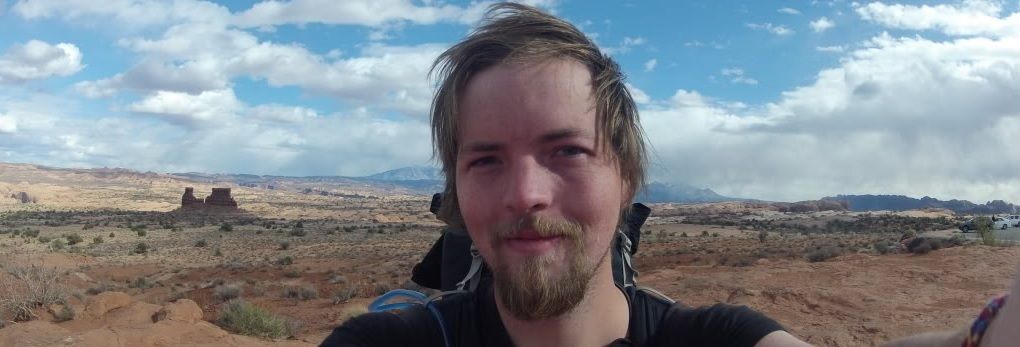
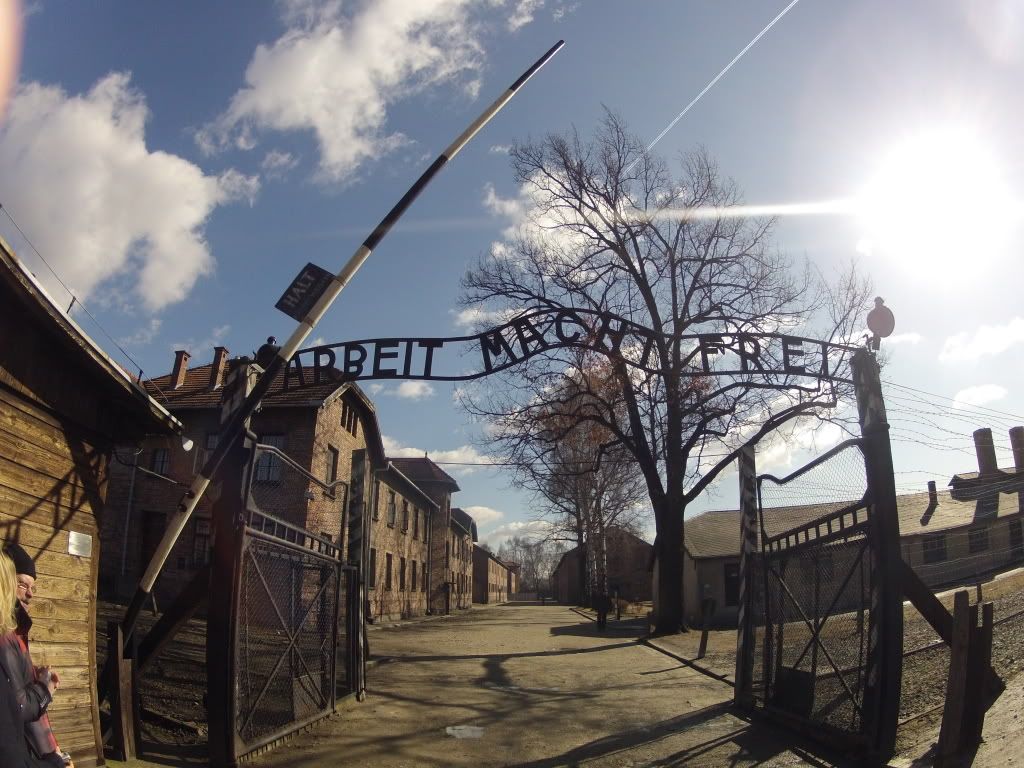

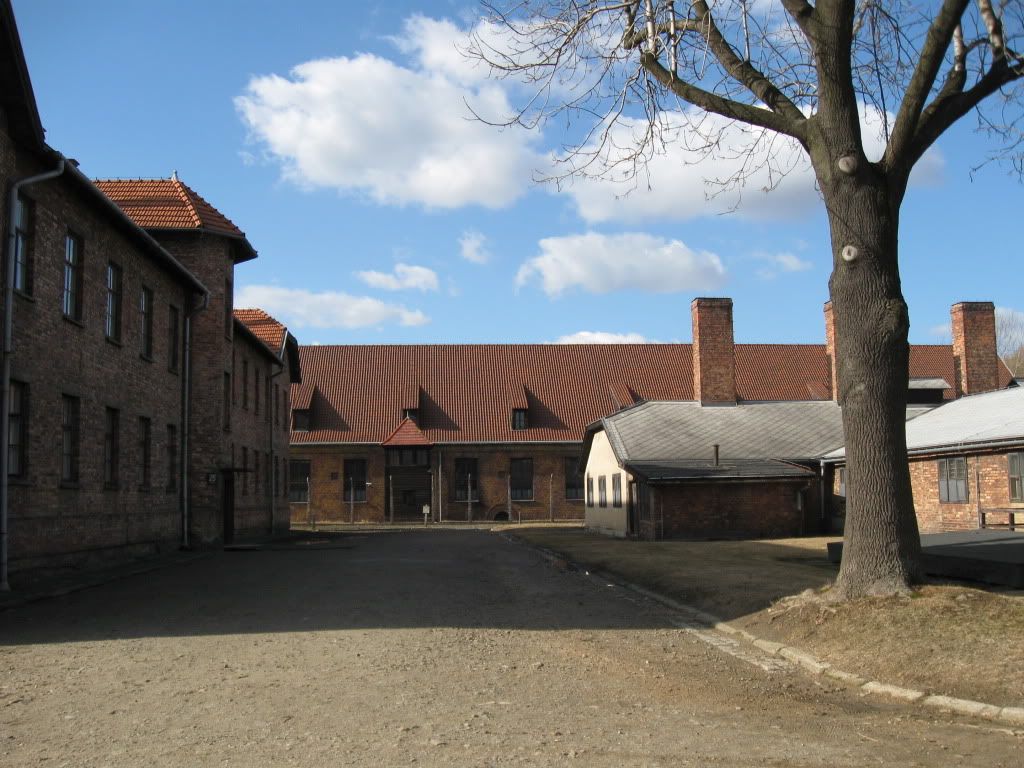
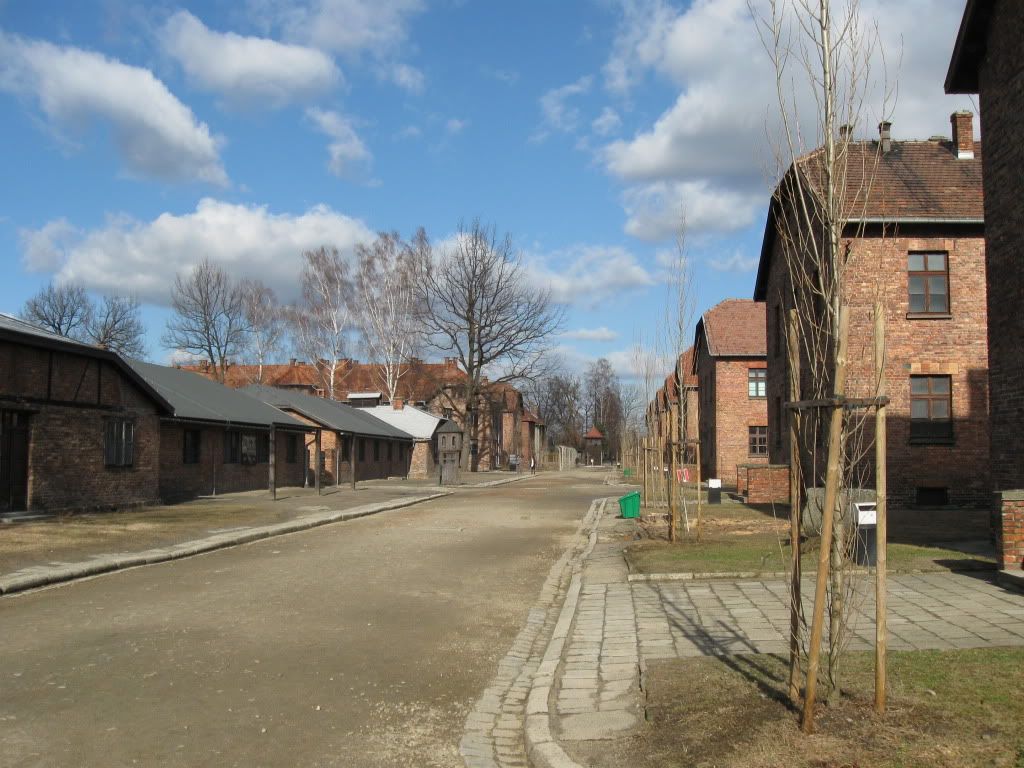
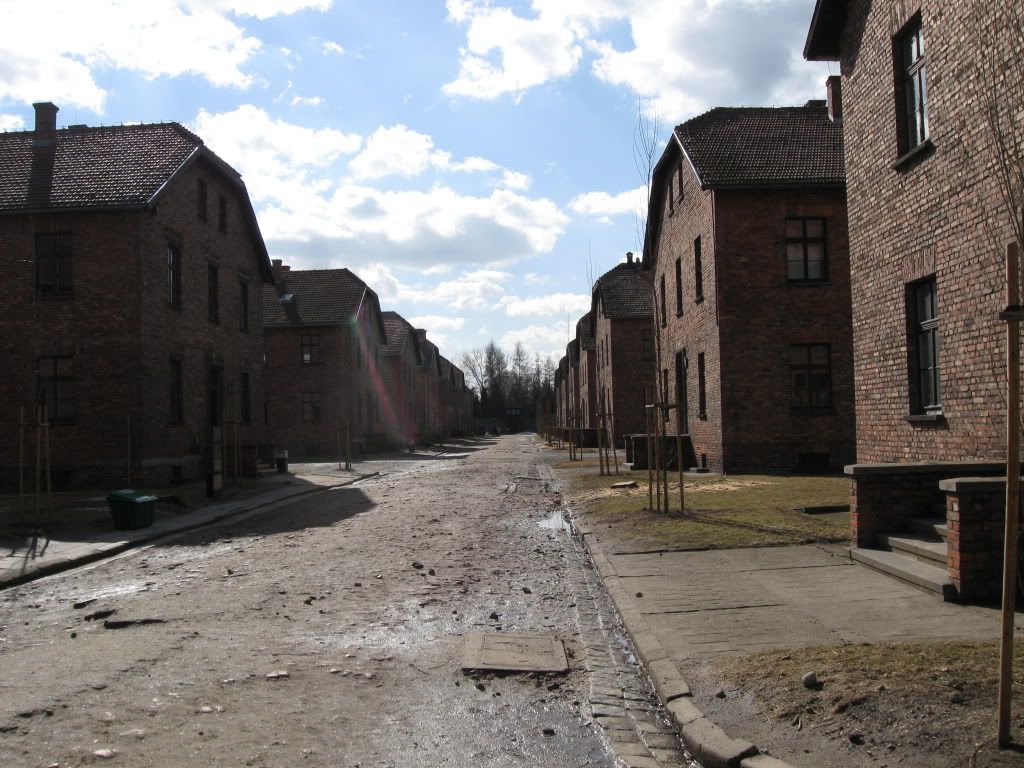
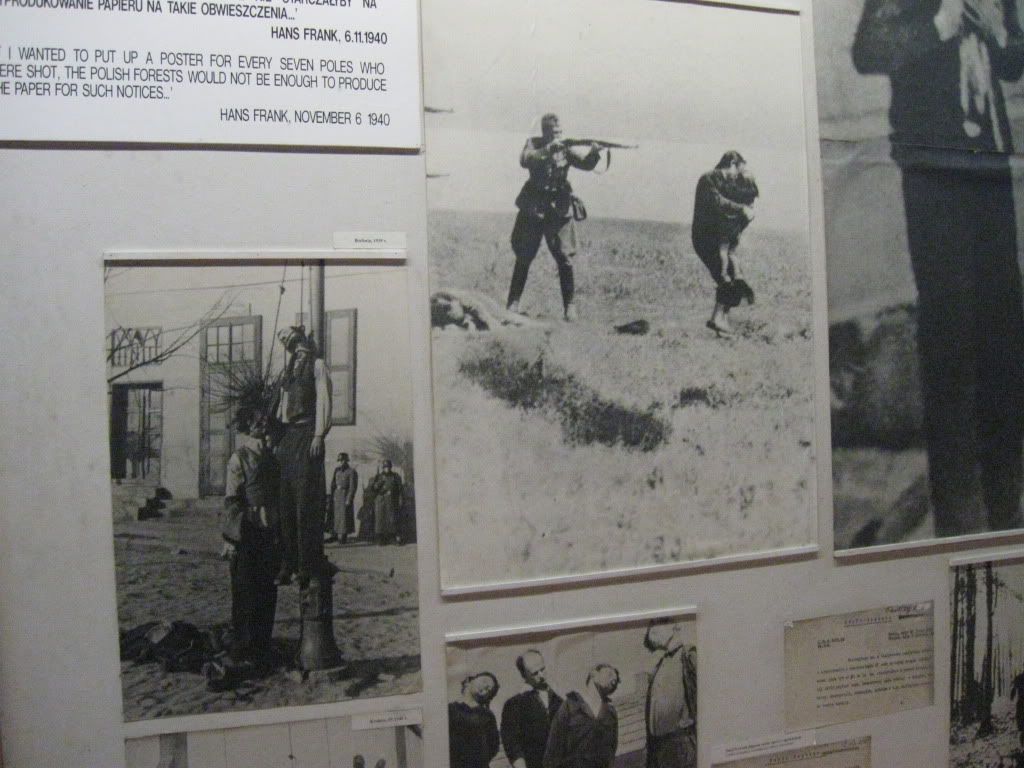
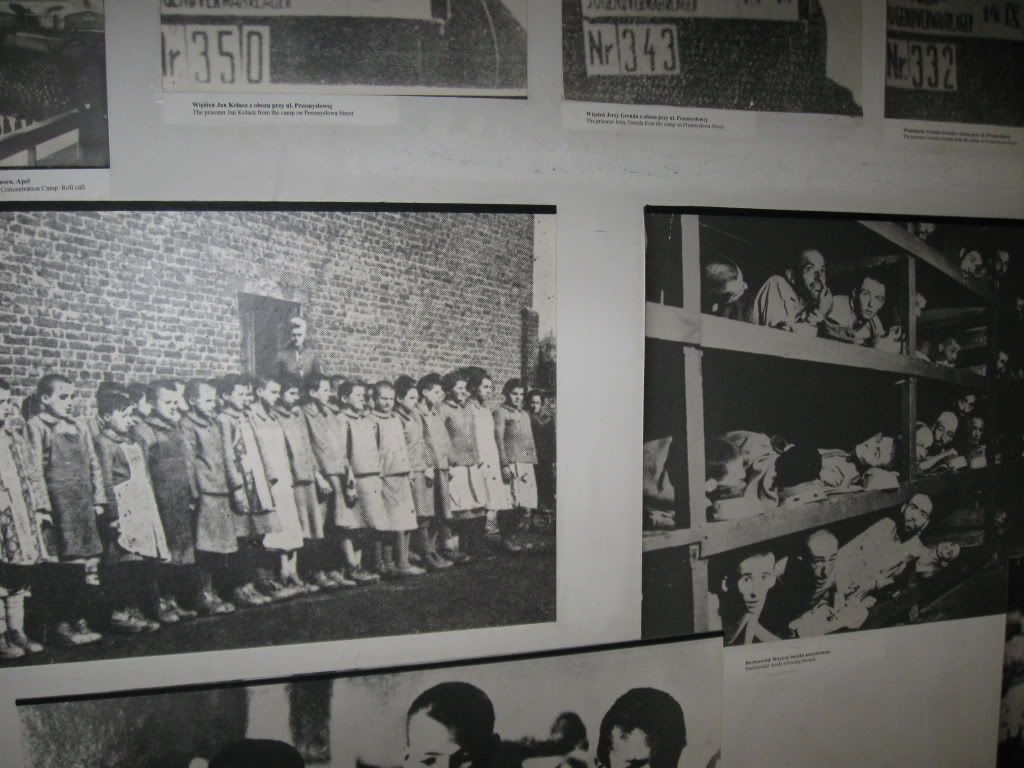
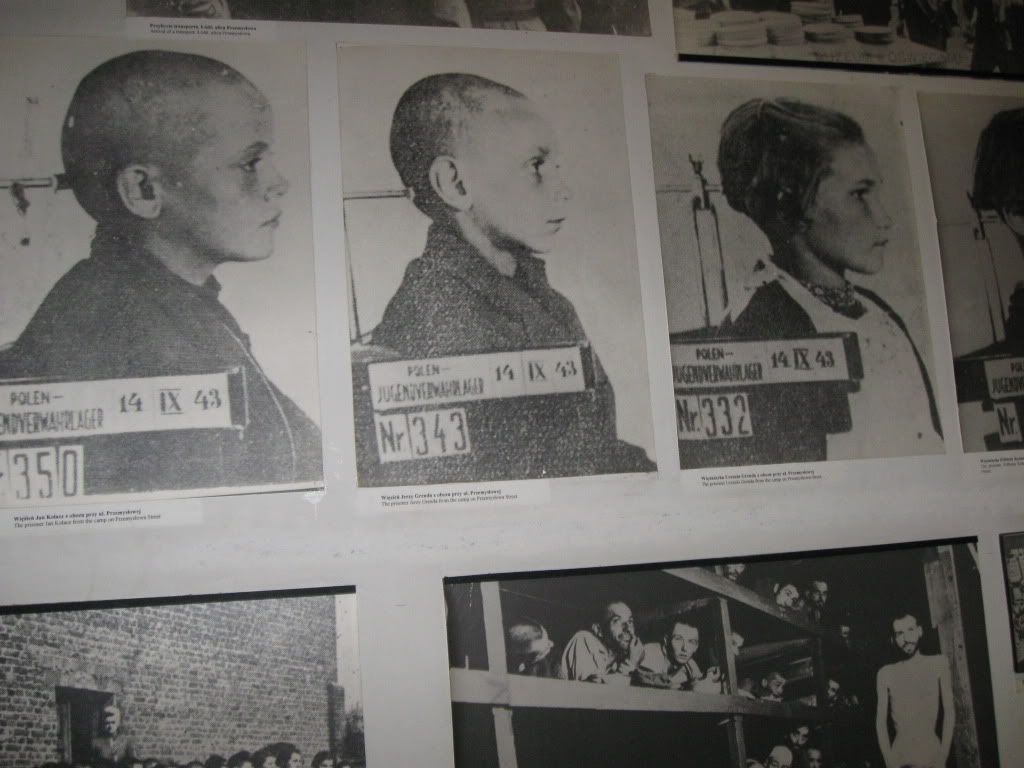
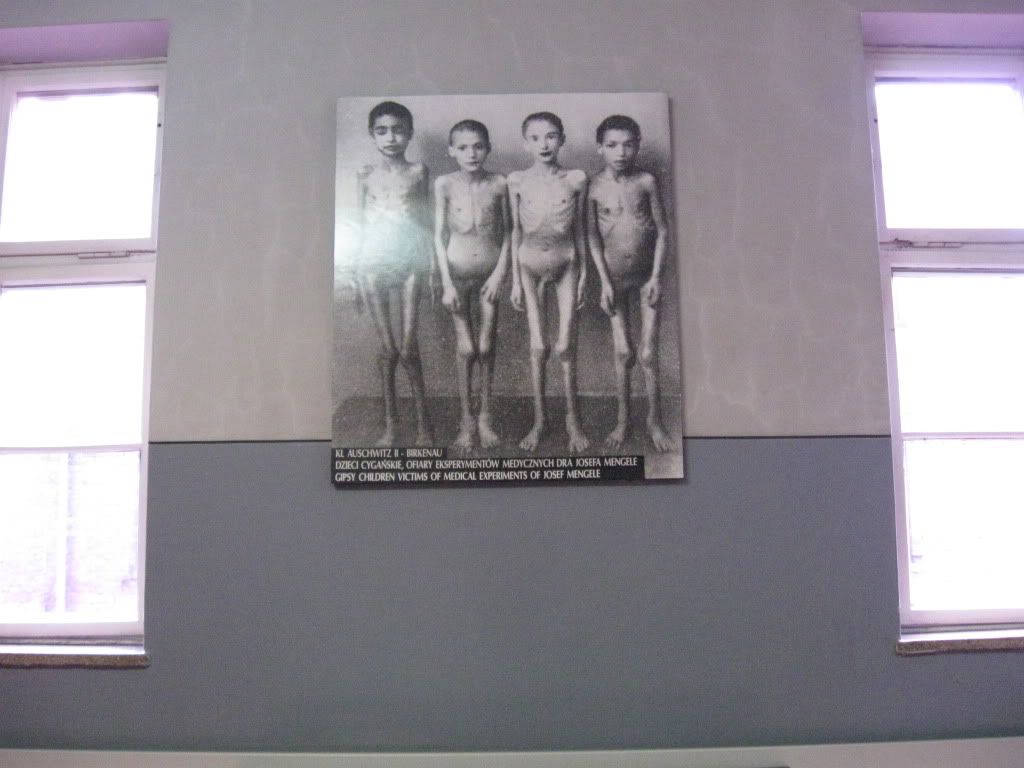
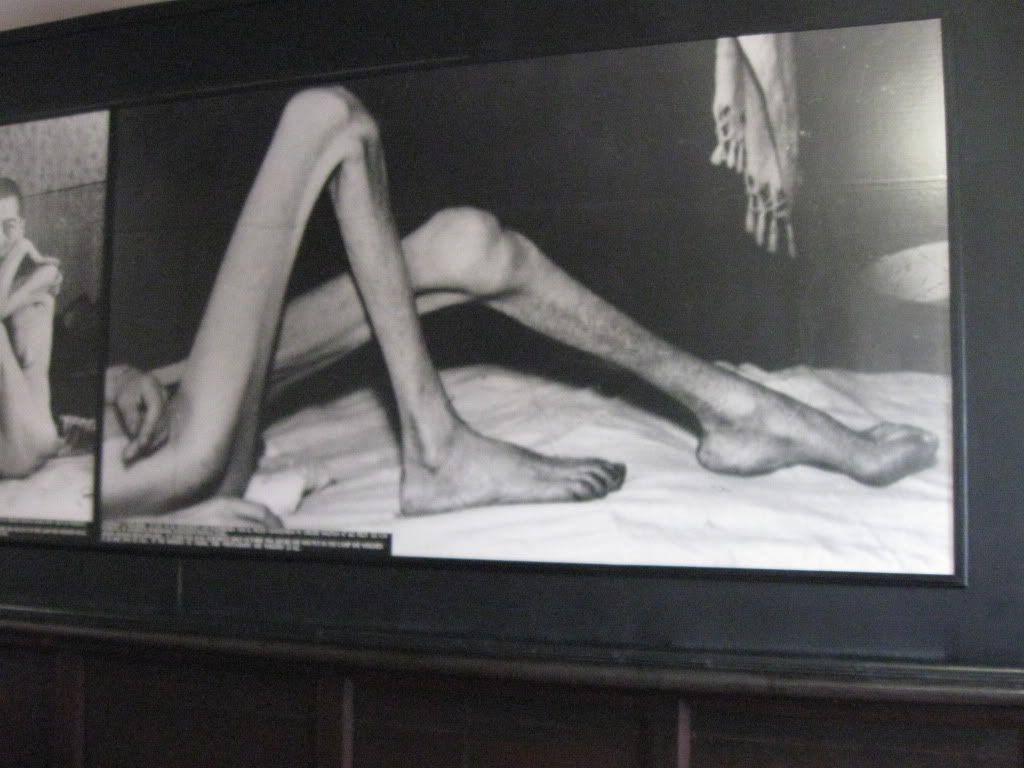
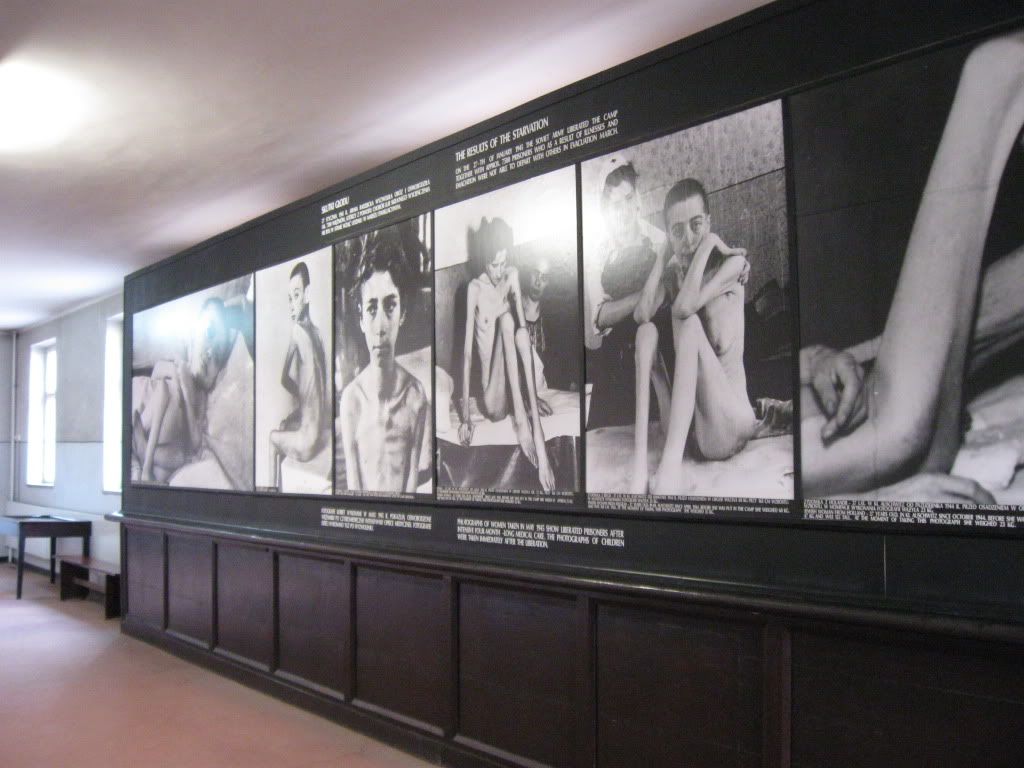


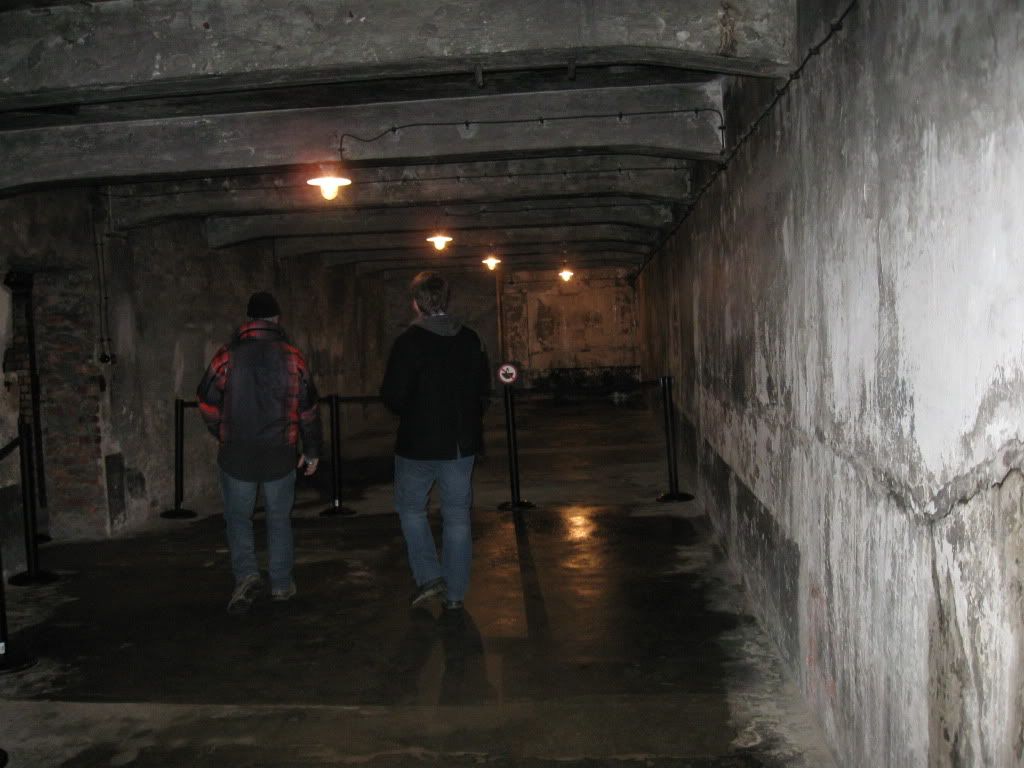
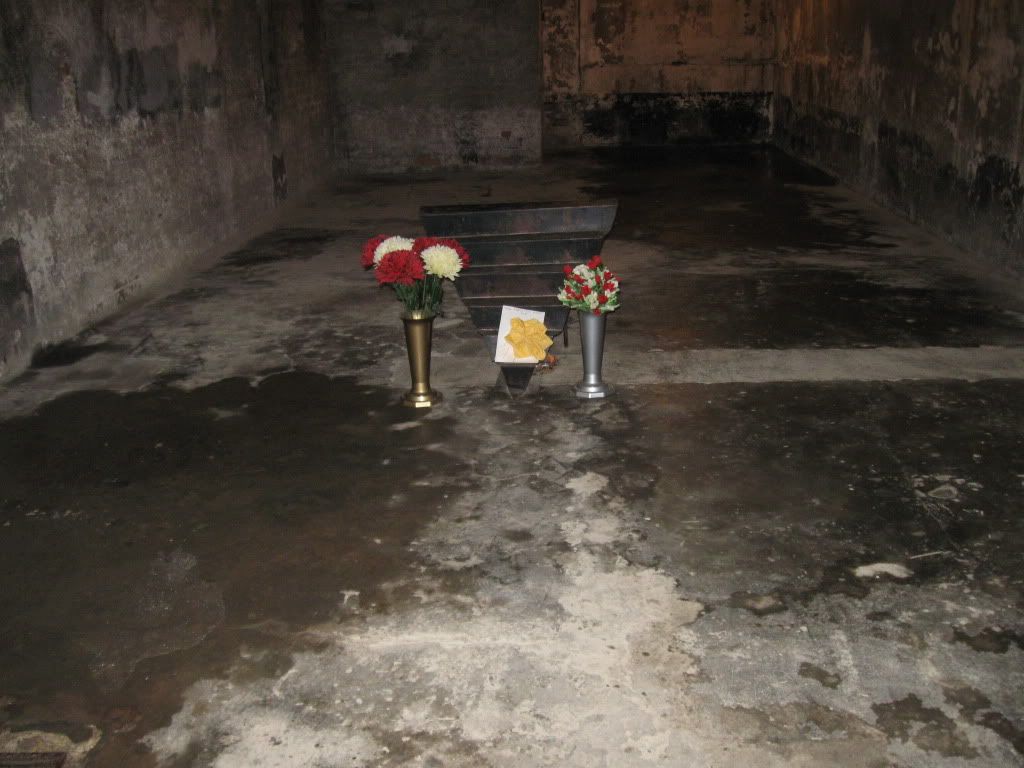
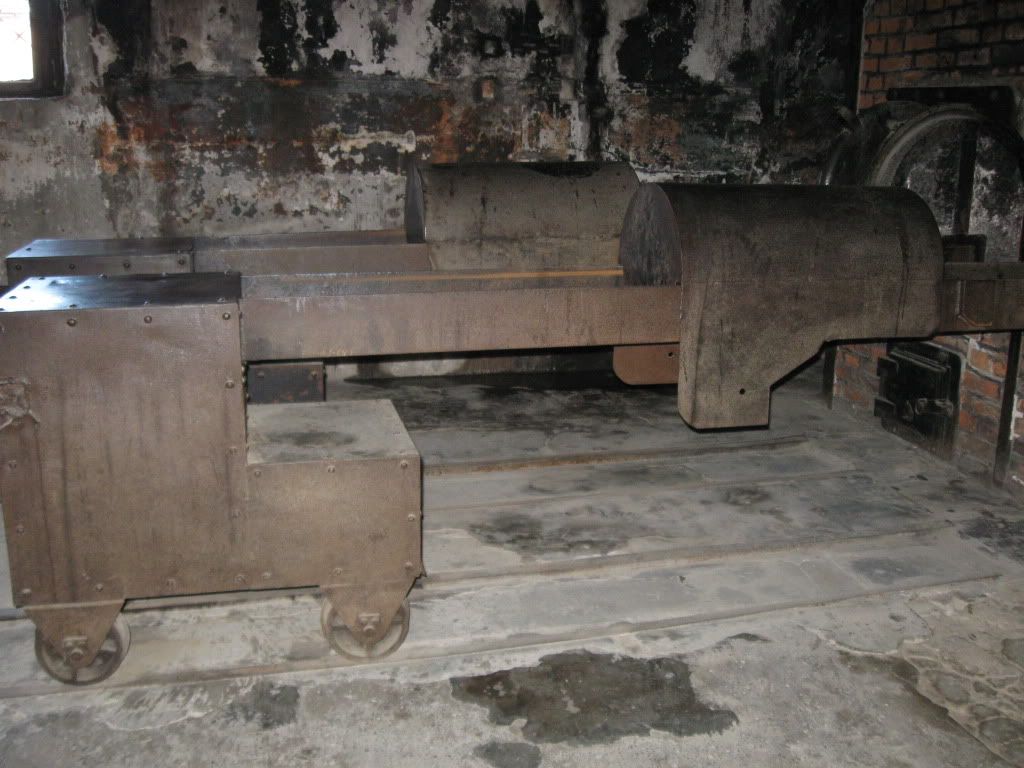

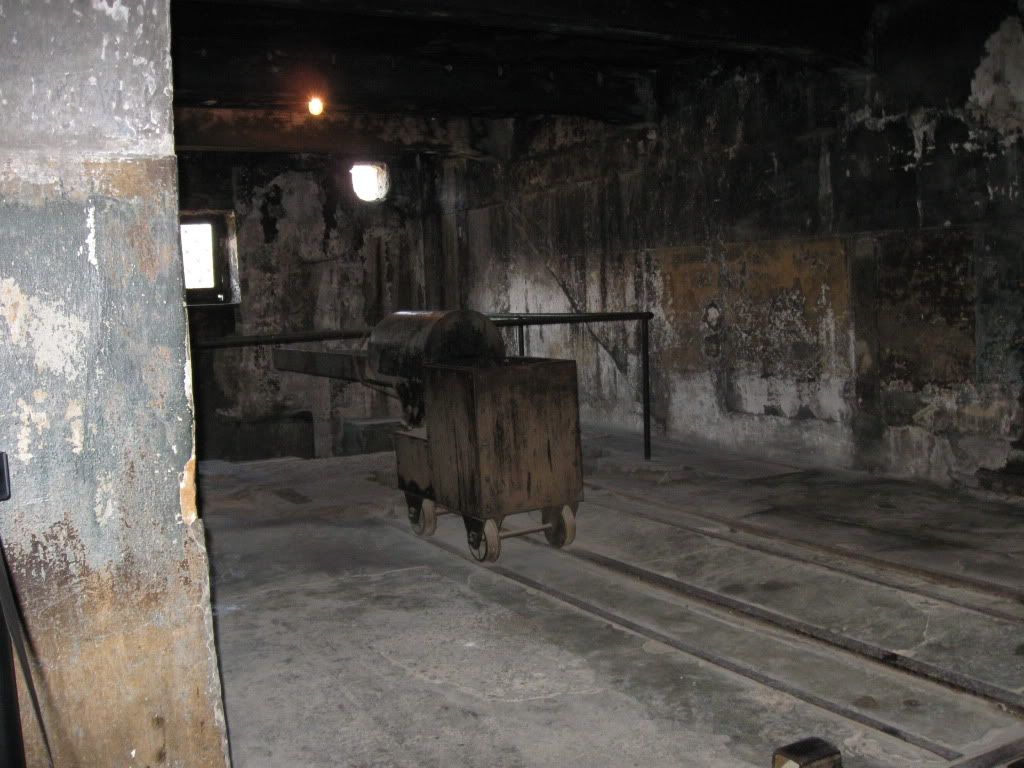
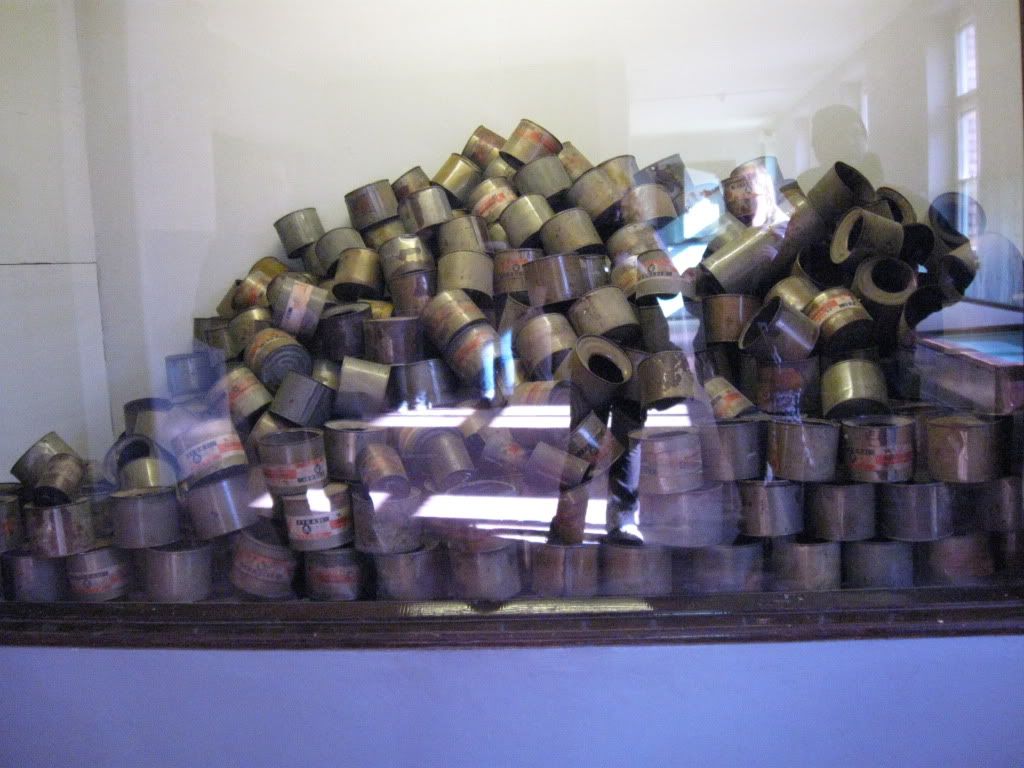
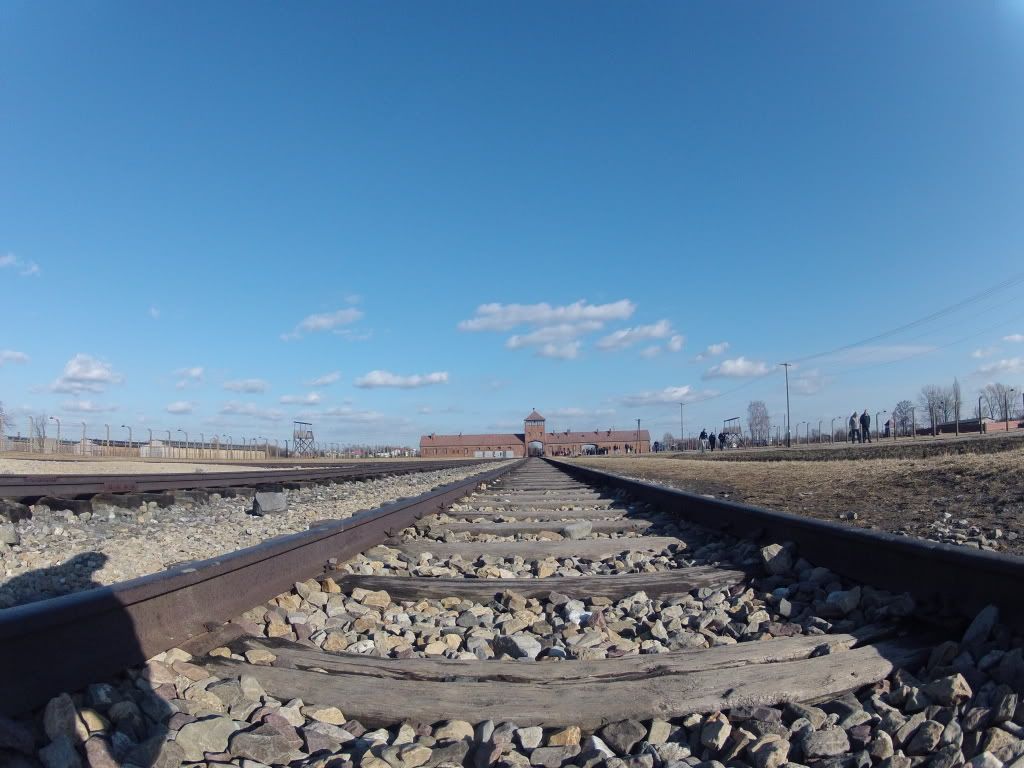
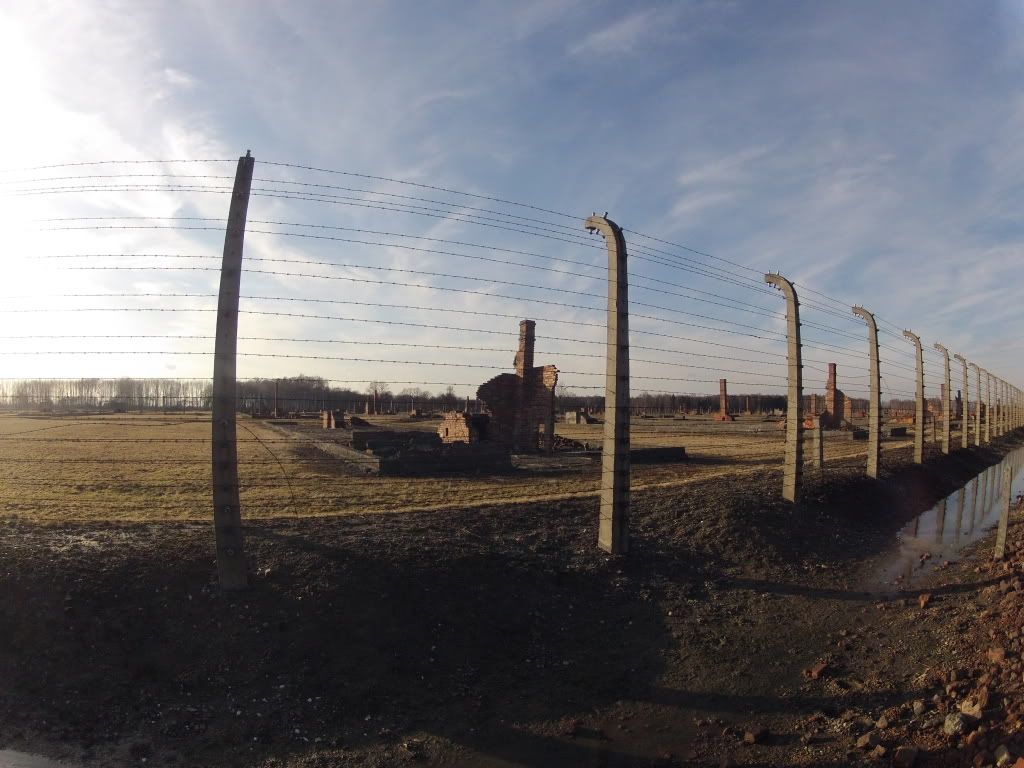

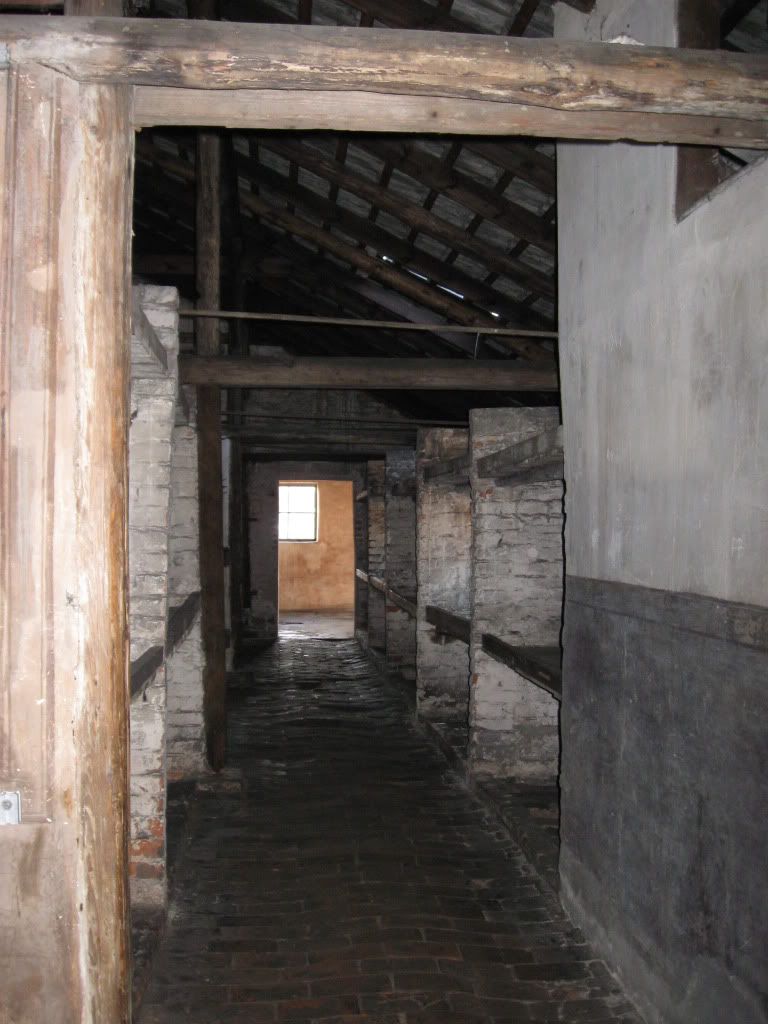

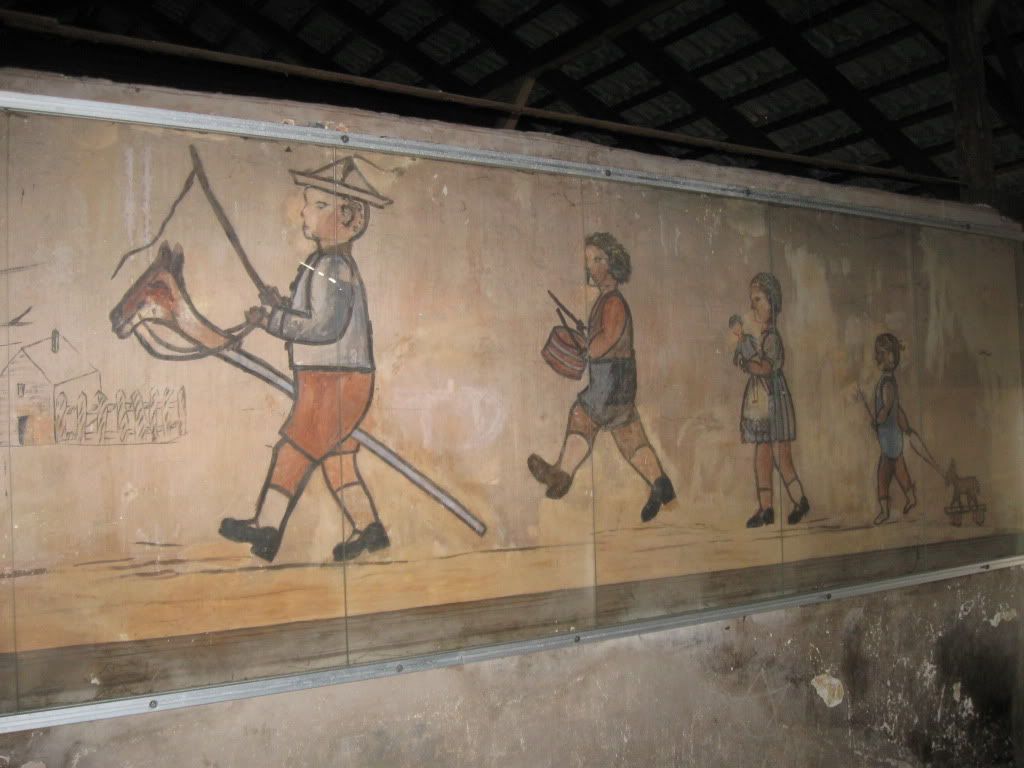
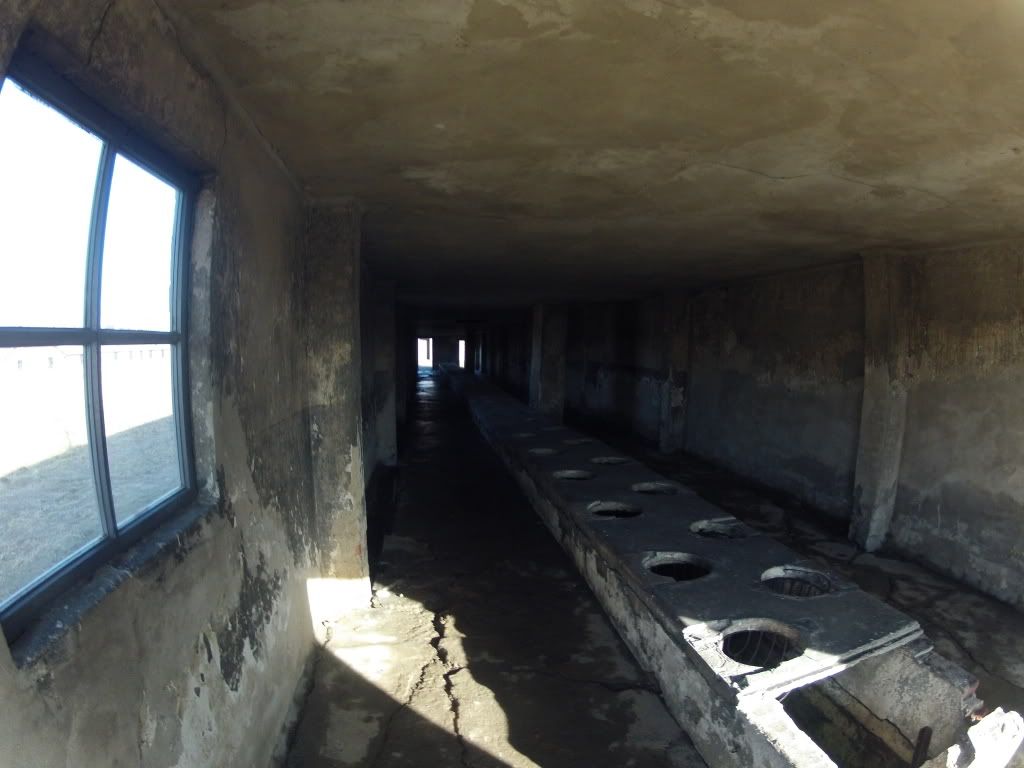
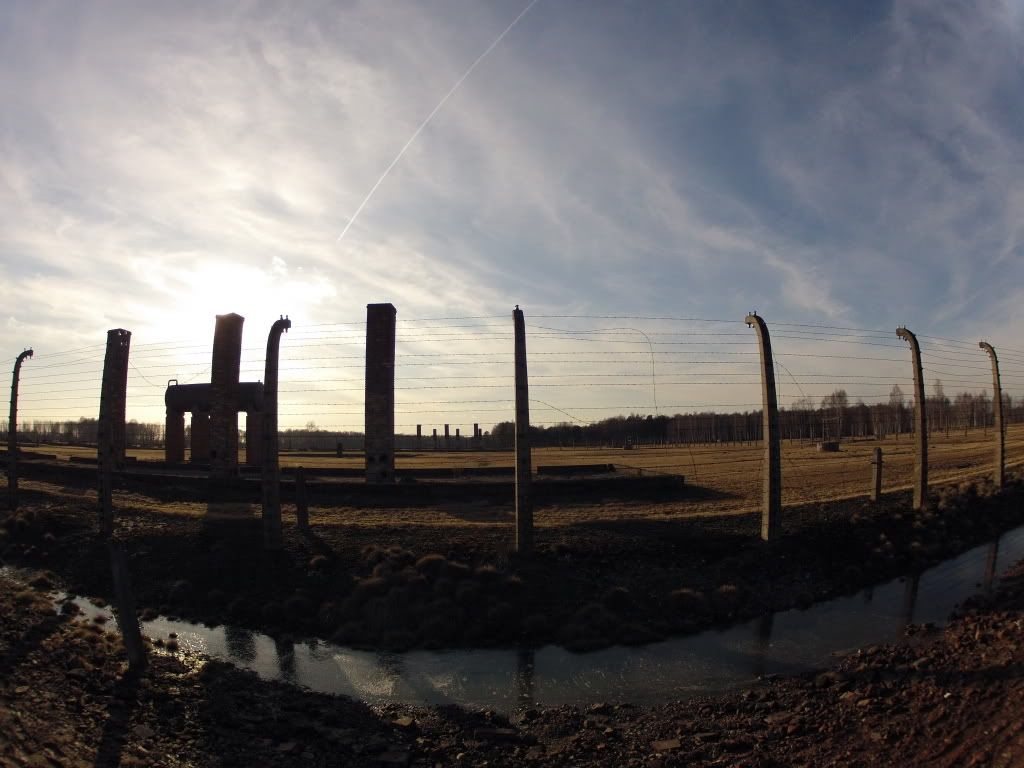
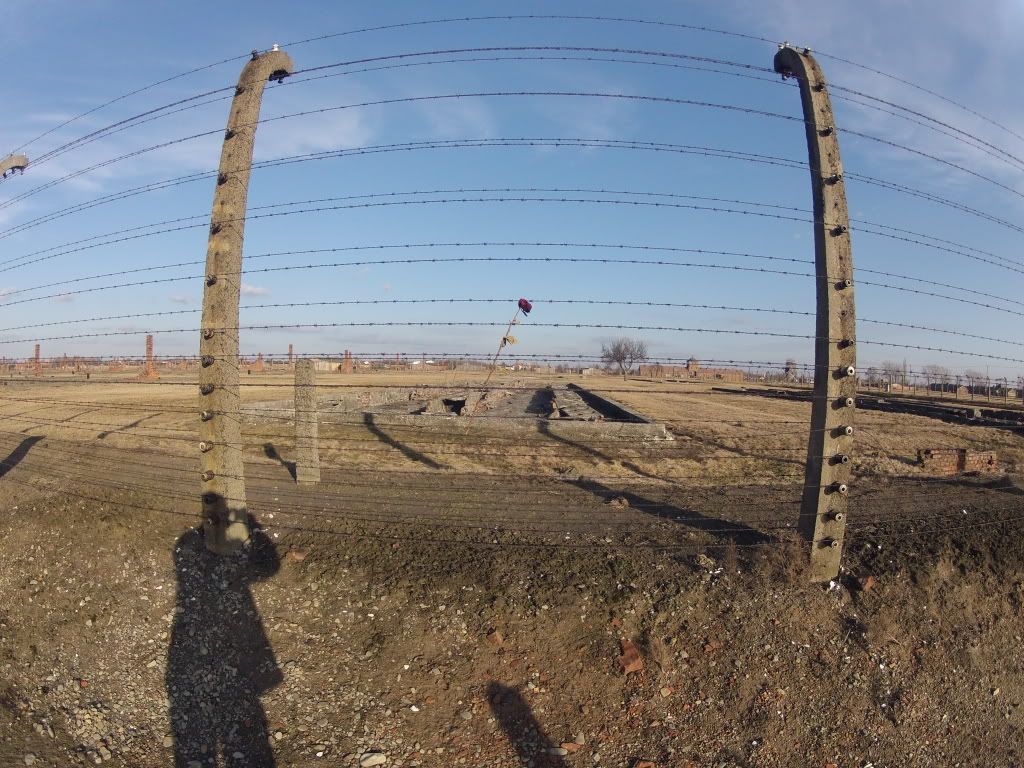
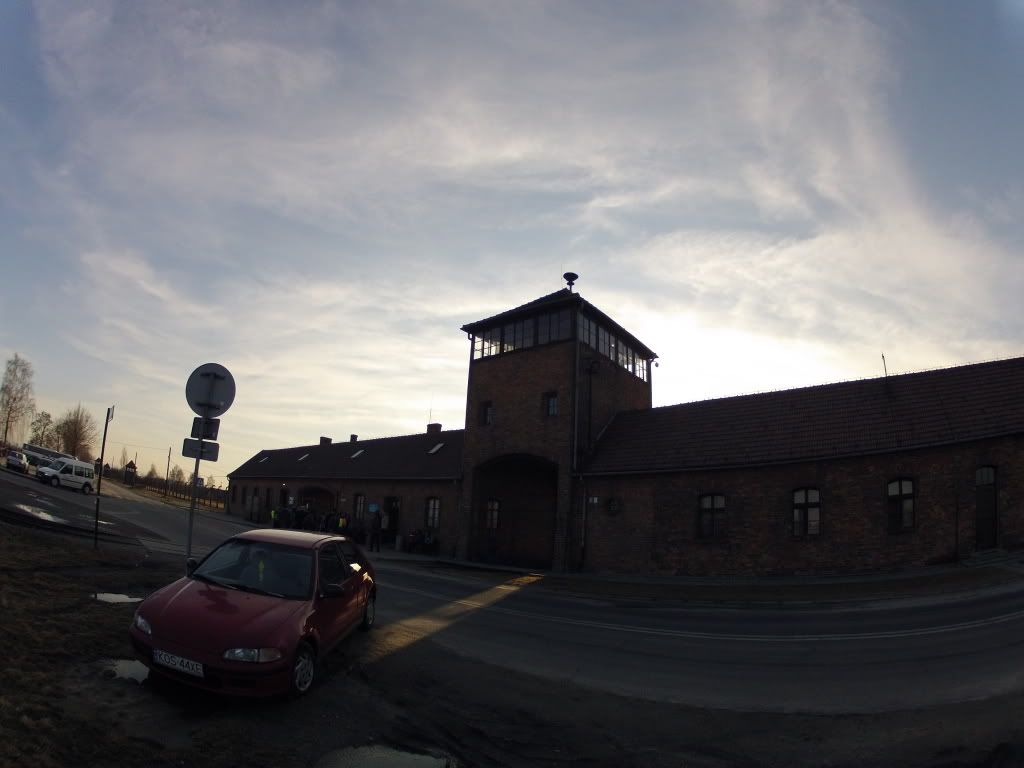
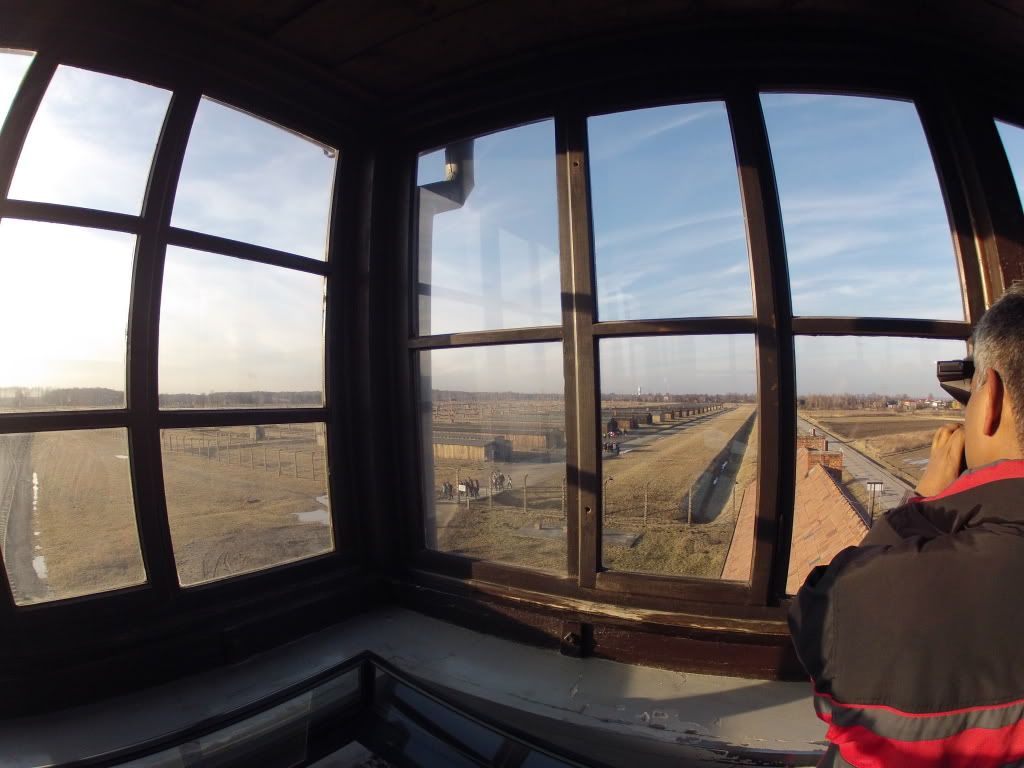

Hello Wandering_soul, I stamble upon your post in BIS forum and I clicked the link.
ReplyDeleteI really enjoy reading your blog. As a jew the last post about Auschwitz really put tears in my eyes.
I did a one year trip along america after I quiet the army and I must tell you six years after it still is the time of my life.
Dream big and live big, brother.